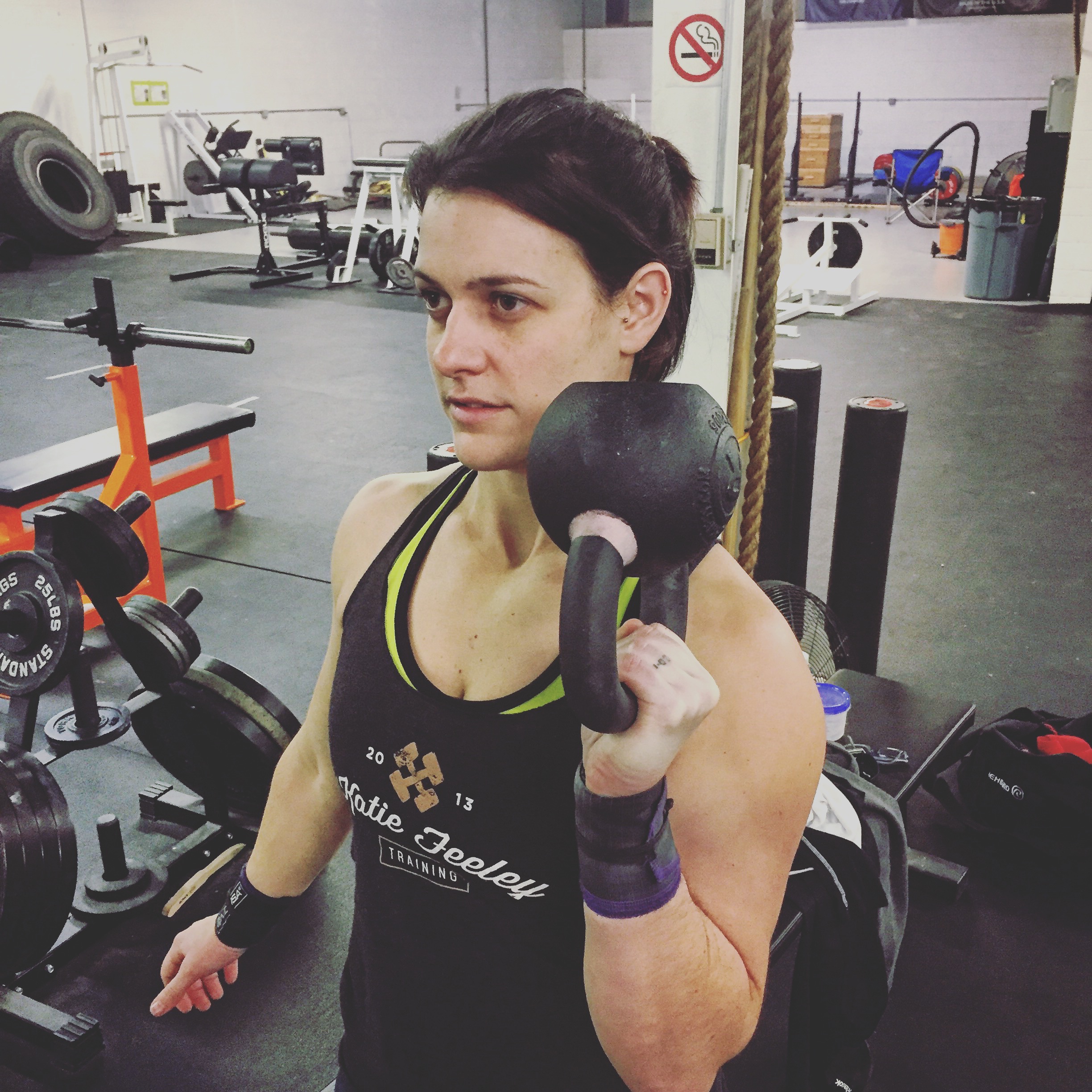
By Aaron Schott, NSCA-CPT, SFG I
It’s easy to get caught up with the wild events we see at strongman competitions and think that something as simple as a kettlebell can’t move the needle toward getting you competition ready. But I’m here to tell you exactly why kettlebells are a super valuable training tool for strongman, and how you can start incorporating them for yourself and your clients.
The goal here isn’t to list out every kettlebell movement ever performed by some stoic Russian calling you “comrade,” but to lay out a few concepts on how even modern strongman competitors can benefit from the simple kettlebell.
Lower Body Power
This one is probably the most obvious, but kettlebells can be a great tool for developing powerful hips and legs. Now don’t get me wrong, I love barbell olympic-style lifts and regularly program them for almost all my athletes, but that doesn’t mean they’re the only tool you can use.
Kettlebells have a few distinct advantages over the barbell; the biggest for me is accessibility.
In order to maximize their benefit, barbell olympic-style lifts require a considerable amount of space, specialized equipment, and – most notably – a high skill requirement. In contrast, you can typically find kettlebells in even most big box gyms. Plus, most people can learn basic kettlebell swings pretty quickly and start seeing results fast!
Add in some heavy 2-bell movements, and you can develop some pretty serious power. As an added bonus, kettlebell movements will generally result in less wear and tear on your body than other power training modalities.
Event Simulation
Nothing can beat actively training with the implements you will be competing with, but with the ever-growing variety of customized equipment it can be near impossible to get your hands on everything. Enter the kettlebell!
They may not be a perfect analog for every event, but the bottom-heavy nature and shape means that with a little imagination you can get pretty close to a number of unique implements. Here are just a couple examples:
- Husafell training: Try marching or walking with a pair of heavy bells in the front rack to train all the stabilizing muscles, as well as cardio endurance with a weighted front carry.
- Log Press: In addition to your barbell press work, try push pressing a set of kettlebells. If they’re big enough, the way they sit out from your body can help train a similar grip and range of motion, in addition to building core and shoulder stability.
- Sandbag Toss: The backswing and hip power used for swings carry over beautifully to sandbag tosses. Try swinging heavier than the bags you’ll need to throw in competition to build strength and power in your hip and knee extension.
Kettlebells also aren’t limited to the frontal plane. You can swing and move laterally as well as rotate with them, giving you a lot of options for ways to train physical attributes that can carry over to competition.
Rehab/Prehab
We’ll start with a disclaimer here: I’m not suggesting you try to fix a torn bicep by swinging a kettlebell. If you get injured, go see a medical professional! With that out of the way…
Kettlebells make a great tool for mobility and rehabbing injuries. Bottom-up press and waiter carries in particular can be a good way to work on shoulder stability at relatively light loads. Suitcase carries are another useful moment for working on stabilizing your core. The weight distribution of a kettlebell is often ideal for movements like arm bars and other stability exercises that a dumbbell might not work as well for.
There are a ton of other exercises that fit in this category but each situation is unique. So if you’re not sure what you need, seek out a qualified professional.
Variety
As they say (whoever “they” are), “variety is the spice of life”, but it’s also a great way to drive big gains! Novel stimulus can break up the monotony, prevent injury, and maybe even help push through plateaus.
You can get as creative as you like or do your normal dumbbell exercises with kettlebells, which can present a new challenge and freshen up your routine. For example, you can replace dumbbell military presses with kettlebell bottom-up presses for extra wrist stability, shoulder stability, and grip work. Try 2-bell goblet squats for bonus core and back work on leg day. Or experiment with kettlebell flat bench to challenge your shoulder stabilizers and mix up how the movement is loaded.
As long as you abide by some basic training and programming principles and use good movement mechanics you can get super strong with kettlebells!
Need Help?
You can find Aaron coaching in-person and online at Power Plant Gym, or you can reach him directly at aaron@thepowerplantgym.com. You’re also welcome to reach out to the team at Strongman.Training for more resources and examples of how to use kettlebells in strongman training. Just email strongmandottraining@gmail.com.
About Aaron Schott
Aaron has been coaching for over a decade and has an amazing depth of knowledge about movement. He started as a wrestler but has trained for and competed in a variety of sports including powerlifting, CrossFit, Tactical Games, running, Olympic-style weightlifting, and strongman. Aaron has completed courses in personal training (NSCA), kettlebells (StrongFirst), nutrition (Precision Nutrition), weightlifting (USAW), CrossFit, and CF Kids.



